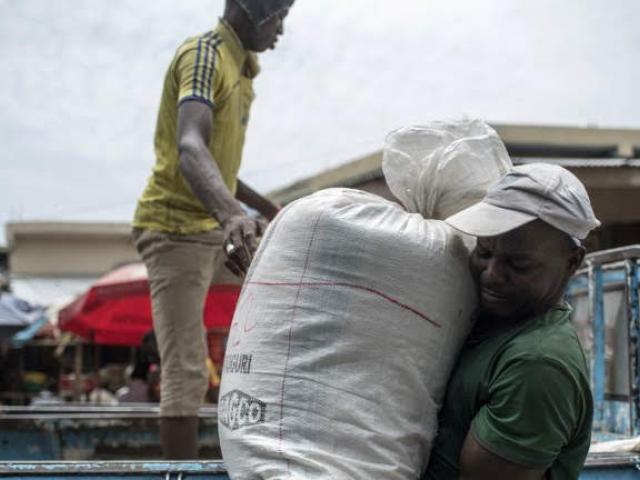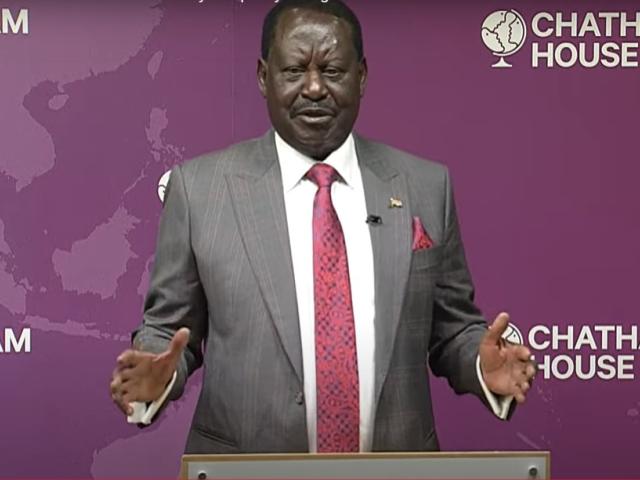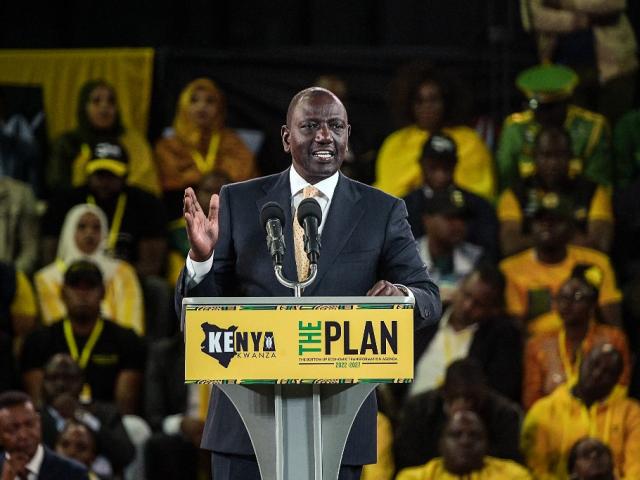- The coalition was correct that the youth, aged between 18 and 35, make up a whopping 75% of Kenya’s unemployed, and also right about the size of foreign remittances in the Kenyan economy, which make up more than 3% of GDP.
- It also had its numbers mostly correct about the shrinking of the country’s manufacturing sector, but was somewhat misleading on the impact of the “blue economy” on money matters.
- The coalition vastly overstated how many Kenyans in urban areas live in slums – the true numbers are just over a million, or 6.9 % of the urban population, not approximately 6.4 million people.
In June 2022, Kenyan presidential candidate Raila Odinga published his pre-election pledges.
The former prime minister is running on an Azimio la Umoja-One Kenya Coalition ticket, the fifth time he has stood for election.
In his manifesto, Odinga made a number of promises, including that he would strengthen devolution, revive manufacturing and make monthly cash transfers to vulnerable households.
He also promised a “double-digit” economic growth rate, free education, to end corruption, boost agriculture and tackle the high cost of living.
We did not assess the viability of his campaign promises as we cannot fact-check the future. But we did sift through the evidence to find out if the manifesto cited the most accurate data on some key claims.
The manifesto described the blue economy as the sustainable use of ocean and other water resources for, among other things, economic growth, food production and to improve livelihoods.
It said Kenya’s Vision 2030, the national development roadmap, had identified the blue economy as a “priority sector”.
It then attributed the two million figure to the World Bank. A World Bank spokesperson sent us a link to a February 2022 brief about its blue economy initiative.
This, however, did not include the figure. We found the exact words used in Odinga’s manifesto in an August 2020 blog from the bank.
Using this as a guide, we then worked our way through the bank’s publications and established the estimate was first taken from a 2018 policy brief by the United Nations Development Programme.
“Fisheries … generate employment for over two million Kenyans through fishing, boat building, equipment repair, fish processing, and other ancillary activities”, the brief said. It did not cite the source of that statistic, however.
The figure is not a World Bank finding. And its usage is in terms of fishing only, which is only one aspect of the blue economy.
We therefore rate the claim misleading. – Grace Gichuhi
This reduction had negatively affected industrialisation, the manifesto said. It added that manufacturing was “ripe” for fresh impetus after nearly a decade of regression.
GDP refers to the gross domestic product, which is a measure of a country’s economy. It is the total market value of all final goods and services produced in a country within a specific time, usually a year.
In 2013, when outgoing president Uhuru Kenyatta took office, Kenya’s GDP was KSh4.7 trillion ($54.6 billion at 2013 exchange rates). Manufacturing contributed KSh507.5 billion to this, or 10.8%.
Kenya’s national statistics office publishes its flagship economic survey annually. The most recent survey, from 2021, provisionally valued the Kenyan economy at KSh12.1 trillion. Manufacturing contributed KSh876.4 billion to this – or 7.2% of GDP. Figures for 2020 estimated the share of manufacturing at 7.6% of the GDP.
The claim is mostly correct. – Dancan Bwire
Kenya’s 2019 census, which is the most recent, found the total population to be 47.56 million.
The constitution defines a child as “an individual who has not attained the age of 18” while the youth are those between 18 and 35.
The census data did show the population under 35 years as 35,700,787, or 75.1% of the total population.
But of these people, 21.9 million, or 61%, were children under 18. Referring to this demographic as “youth” so as to score political points is misleading. – Alphonce Shiundu
The country’s statistics office collects unemployment data. Its most recent labour force report, published in May 2021, covers the first three months of that year.
It showed a total working-age population – defined as those aged 15 to 64 – of 28 million people.
Out of a total of 1,264,333 unemployed people, 959,889 were aged between 15 and below 35, considered youth for the purposes of labour statistics, and as per the Africa Youth Charter of the African Union. This works out to 75.9%.
We therefore rate this claim correct. – Alphonce Shiundu
Kenya’s central bank defines remittances as “money sent by a person in a foreign land to his or her home country”.
The manifesto pledged to entice Kenyans living abroad to invest in the country. It then gave the annual remittances in 2021 as $3.7 billion. As evidence for this, it cited the diaspora remittances survey published in December 2021 by the central bank.
The bank keeps a monthly record of remittances, denominated in the US dollar. The most recent data shows remittances for 2021 were valued at $3.72 billion.
|
Kenya diaspora remittances |
|
|
2021 |
Total (US$ million) |
|
January |
278.3 |
|
February |
260.3 |
|
March |
290.8 |
|
April |
299.3 |
|
May |
315.8 |
|
June |
305.9 |
|
July |
336.7 |
|
August |
312.9 |
|
September |
309.8 |
|
October |
337.4 |
|
November |
320.1 |
|
December |
350.6 |
|
Total |
3,717.9 |
The claim is therefore correct. – Dancan Bwire
In 2021, the year for which data is most recent, the country’s statistics office estimated the GDP to be KSh12.1 trillion.
Remittances totalled KSh413 billion that year. Using these provisional figures, remittances were equal to 3.4% of the GDP.
We therefore rate the claim correct. – Dancan Bwire
Kenya’s statistics office defines informal settlements as “urban settlements characterised by poor structural quality of housing; lack of formal basic services and infrastructure; and lack of surety of tenure. In most cases they are located in geographically and environmentally hazardous areas”.
The World Bank’s definition can be read here. The development lender’s most recent data is from 2018, and it showed that 46.5% of Kenya’s urban population lived in informal settlements.
Contacted for the source of their data, a bank spokesperson directed us to Kenya’s national statistics office. In turn, the data agency said the most recent report on urbanisation was published in April 2022, using 2019 census data.
The report shows that 1,016,913 people live in informal settlements in urban areas. This is 6.9% of the total urban population of 14.8 million people.
If 56% of the urban population lived in these settlements, the figure would be 8.2 million, not 6.4 million as claimed in the manifesto. – Tess Wandia







Add new comment